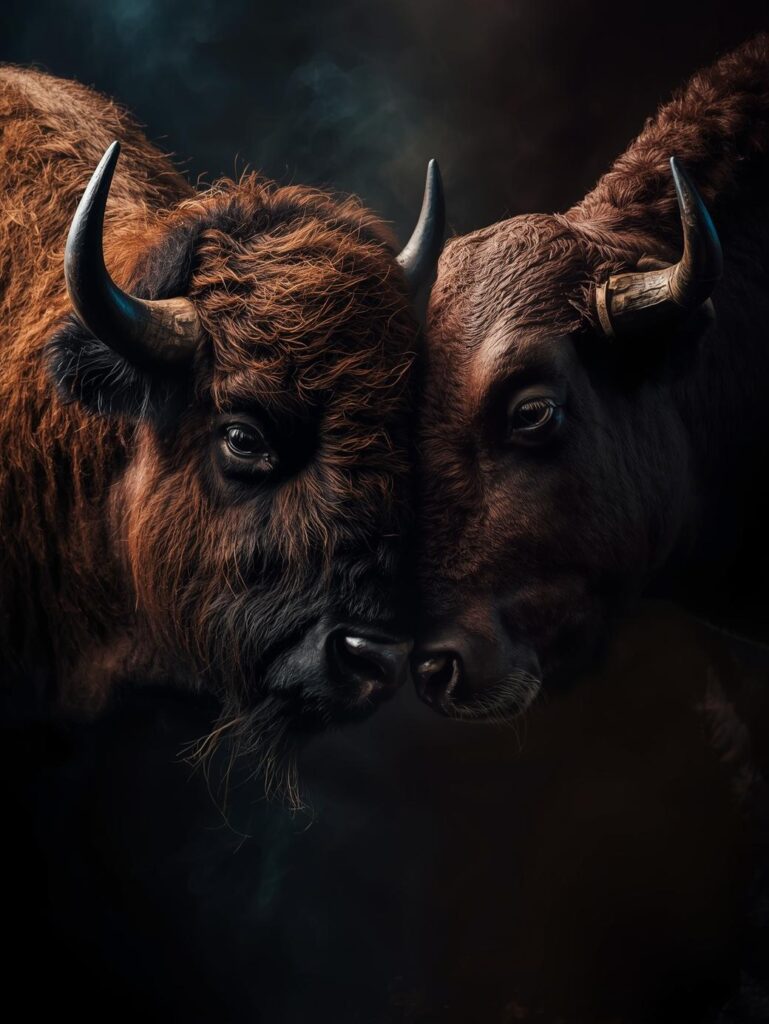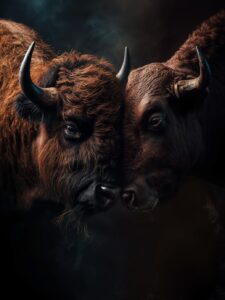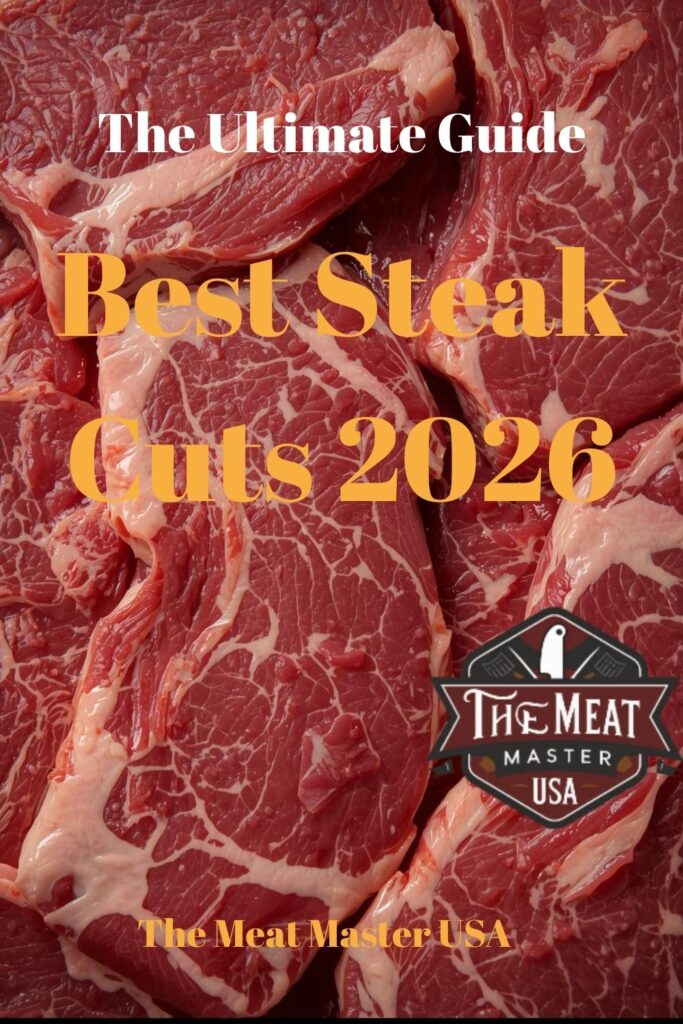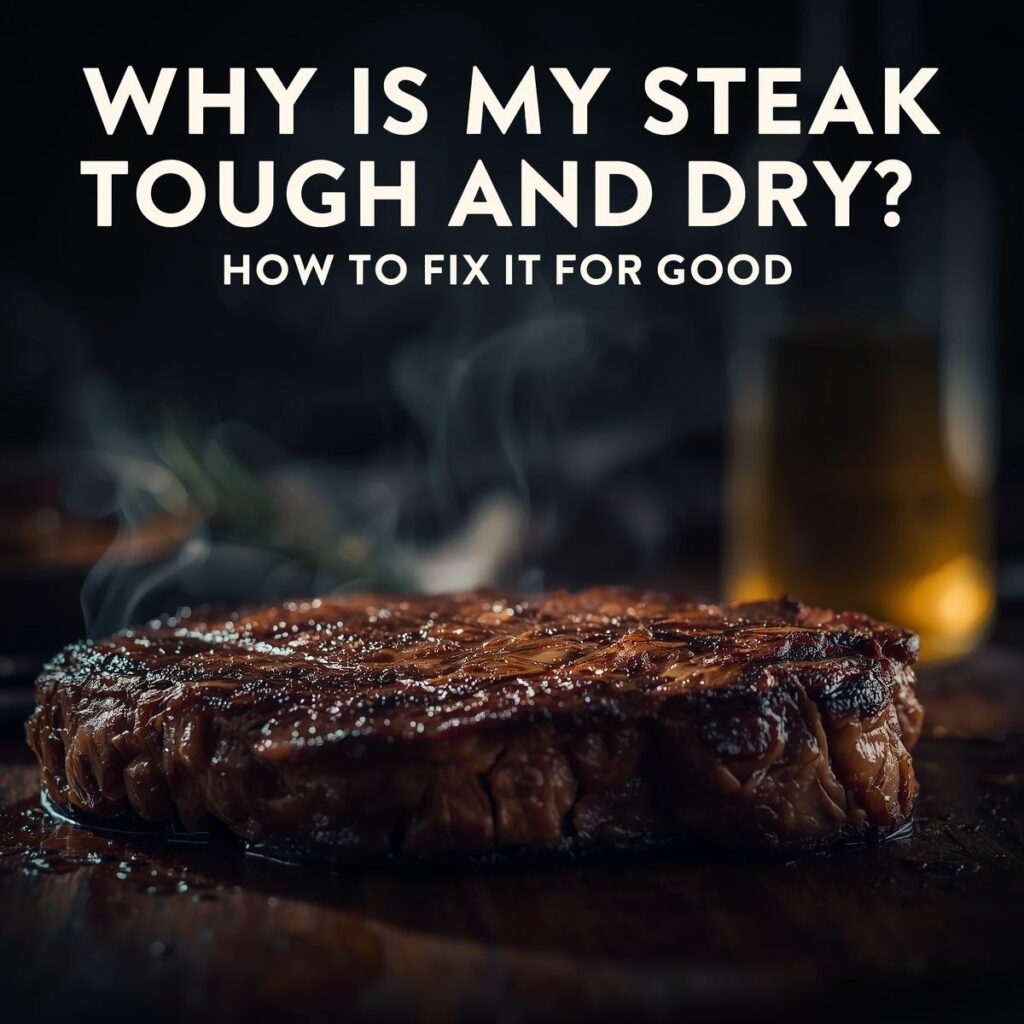Butcher’s Insight: This comparison isn’t just about nutrition labels—it’s about understanding how two magnificent animals deliver completely different eating experiences. Bison isn’t “better beef”—it’s its own unique protein with distinct cooking requirements and flavor profiles. Having worked with both for decades, I’ll show you when to choose bison for its lean majesty and when to stick with beef for its marbled glory.
Bison vs Beef: Nutrition, Flavor, and Cooking Differences
“Bison isn’t just leaner beef—it’s a different animal entirely. Where beef comforts with rich marbling and familiar flavor, bison challenges with lean intensity and cleaner taste. Choosing between them isn’t about which is ‘better’—it’s about understanding when you want the hearty embrace of beef versus the clean, mineral-forward punch of bison. Master both, and you unlock two completely different paths to meat perfection.”
Bison vs Beef: Nutrition, Flavor, and Cooking Differences
Download Our Bison vs Beef Quick Reference Guide - Nutrition, Cooking Times & Flavor Pairings
The American meat case is evolving, and bison is no longer just a novelty—it’s a legitimate alternative to beef that’s winning over health-conscious carnivores and flavor adventurers alike. But this isn’t a simple substitution game. Bison behaves differently, tastes different, and demands different cooking approaches. This guide will transform you from a bison novice to a confident cook who knows exactly when to reach for the majestic buffalo versus trusted beef.
🎯 THE QUICK VERDICT: BISON VS BEEF AT A GLANCE
Know immediately which protein fits your needs tonight.
🐃 CHOOSE BISON WHEN…
- You’re counting calories and fat grams
- You want cleaner, mineral-forward flavor
- You’re cooking burgers or steaks medium-rare
- You want higher iron and Omega-3 content
- You’re serving health-conscious guests
🐄 CHOOSE BEEF WHEN…
- You crave rich, buttery marbling and fat content
- You’re slow-cooking or braising tough cuts
- You want familiar, comforting flavor
- You’re cooking beyond medium-rare
- Budget is a primary concern
🔬 THE NUTRITION BATTLE: SCIENCE DOESN’T LIE
Where bison’s leanness creates both advantages and cooking challenges.
⚖️ Side-by-Side Nutrition: 6oz Ground Meat Comparison
🎯 Nutritional Showdown: Grass-Fed Bison vs. 85/15 Grass-Fed Beef
| Nutrient | Bison | Beef | Difference | Impact |
|---|---|---|---|---|
| Calories | 218 | 332 | -34% | Major for weight management |
| Total Fat | 8g | 18g | -55% | Dramatically leaner |
| Saturated Fat | 3g | 7g | -57% | Heart health advantage |
| Protein | 42g | 38g | +10% | More protein per calorie |
| Iron | 4.2mg | 3.1mg | +35% | Anemia prevention |
| Omega-3 | ~120mg | ~80mg | +50% | Anti-inflammatory boost |
🧬 The Genetic & Lifestyle Differences
Why Bison is Naturally Leaner
- Evolutionary Adaptation: Bison evolved as migratory animals traveling hundreds of miles, developing lean, efficient muscle rather than energy-storing fat.
- Grass-Fed by Nature: While beef can be grain-finished for marbling, bison are almost exclusively grass-fed their entire lives, resulting in leaner meat with higher CLA (conjugated linoleic acid).
- Lower Stocking Density: Bison roam more freely than most cattle, resulting in more muscular development and less fat accumulation.
- Genetic Leanness: Centuries of surviving harsh winters genetically selected for bison that store fat internally around organs rather than in muscle tissue.
👃 THE FLAVOR PROFILE: TWO DIFFERENT ANIMALS, LITERALLY
This isn’t subtle—these meats taste fundamentally different.
🐃 Bison Flavor Profile
Clean, Mineral, Earthy
- Cleaner Finish: Less fat means no greasy aftertaste—the flavor disappears cleanly rather than lingering.
- Mineral Forward: Distinct iron-rich taste similar to venison but milder. Often described as “sweeter” than beef.
- Earthy Undertones: Grass-fed influence creates subtle earthy, almost mushroom-like notes.
- Lighter Mouthfeel: Less fat coating the palate creates a cleaner, less rich experience.
🐄 Beef Flavor Profile
Rich, Buttery, Familiar
- Fatty Richness: Marbling creates buttery, rich flavors that coat the palate and linger.
- Umami Depth: Higher fat content delivers more pronounced savory, umami characteristics.
- Familiar Comfort: The classic “beefy” flavor we’re culturally accustomed to from childhood.
- Versatile Base: Neutral enough to carry strong seasonings and sauces without being overwhelmed.
🔥 THE COOKING SHOWDOWN: ADJUST OR RUIN
Bison’s leanness makes it less forgiving—master these adjustments.
⏱️ Critical Cooking Time Differences
Why Bison Cooks 30% Faster
- Less Fat Insulation: No marbling means heat penetrates faster and more directly to muscle fibers.
- Denser Muscle Structure: Bison muscle is typically denser and finer-grained than beef.
- Lower Internal Melting Point: What little fat exists renders at lower temperatures.
- Reduced Margin for Error: With no fat to lubricate and protect, overcooking happens rapidly.
🎯 Cut-by-Cut Cooking Guide
🎯 Bison vs Beef: Cooking Adjustments for Common Cuts
| Cut | Beef Approach | Bison Adjustment | Doneness Target | Key Tip |
|---|---|---|---|---|
| Ground (Burgers) | Medium to Medium-Well | Medium-Rare ONLY | 130-135°F | Add 1 tbsp olive oil per lb to prevent dryness |
| Ribeye/Strip | Medium-Rare Perfect | Rare to Medium-Rare | 120-128°F | Cook 25% less time than beef equivalent |
| Roasts | Low & Slow | Even Lower & Slower | 135-145°F | Braise with extra liquid; no direct dry heat |
| Stew Meat | 2-3 hours simmering | 1.5-2 hours max | Fork-tender | Check early—goes from tough to dry quickly |
| Brisket | 200°F for 12+ hours | NOT RECOMMENDED | N/A | Too lean for traditional brisket methods |
💰 THE PRICE & AVAILABILITY REALITY
Why bison costs more and where to find it.
💸 Understanding the Price Gap
Why Bison Commands Premium Pricing
- Smaller Herds: Only ~500,000 bison in North America vs 100 million cattle.
- Slower Growth: Bison take 24-30 months to reach market weight vs 18 months for cattle.
- Lower Yield: Leaner animals mean less saleable meat per animal.
- Specialized Processing: Fewer facilities equipped for bison processing increases costs.
- Transport Challenges: Bison are more difficult and dangerous to transport.
- Supply Chain Scale: No economy of scale compared to massive beef industry.
🚨 TROUBLESHOOTING: FIXING COMMON BISON MISTAKES
🎯 Bison Cooking Rescue Guide
| Problem | What Went Wrong | Immediate Fix | Prevention |
|---|---|---|---|
| Dry, Tough Burgers | Overcooked + no added fat | Chop and use in chili or sauce | Add fat to grind, cook to 135°F max |
| Chewy Steaks | Overcooked lean muscle | Slice thin against grain, serve with sauce | Use meat thermometer, pull at 125°F |
| Lacks Flavor | Expecting beefy richness | Boost with umami sauces or mushrooms | Embrace cleaner flavor, use assertive seasoning |
| Sticks to Grill | Less fat to self-lubricate | Carefully release with thin spatula | Oil the meat, not the grill; ensure hot clean grates |
🏁 THE FINAL VERDICT: WHICH MEAT WINS?
The bison vs beef debate doesn’t have one winner—it has different winners for different situations. Bison wins on nutritional metrics and offers a unique, cleaner flavor experience for those willing to master its cooking peculiarities. Beef wins on familiarity, forgiving cooking nature, and rich, comforting flavor that has stood the test of time.
Choose bison when nutritional profile matters most, you’re cooking quick-cooking items to medium-rare, and you want to explore a cleaner, mineral-forward meat experience.
Choose beef when you want rich, familiar flavor, you’re slow-cooking or braising, budget matters, or you’re cooking for guests who prefer traditional meat experiences.
The true victory comes from mastering both—understanding that they’re different tools for different culinary jobs rather than direct competitors.
🌡️ MASTER MEAT TEMPERATURES FIRST →
Perfect your cooking with our complete temperature guide—essential for bison success
Continue Your Meat Mastery: Deepen your knowledge with these essential guides.






